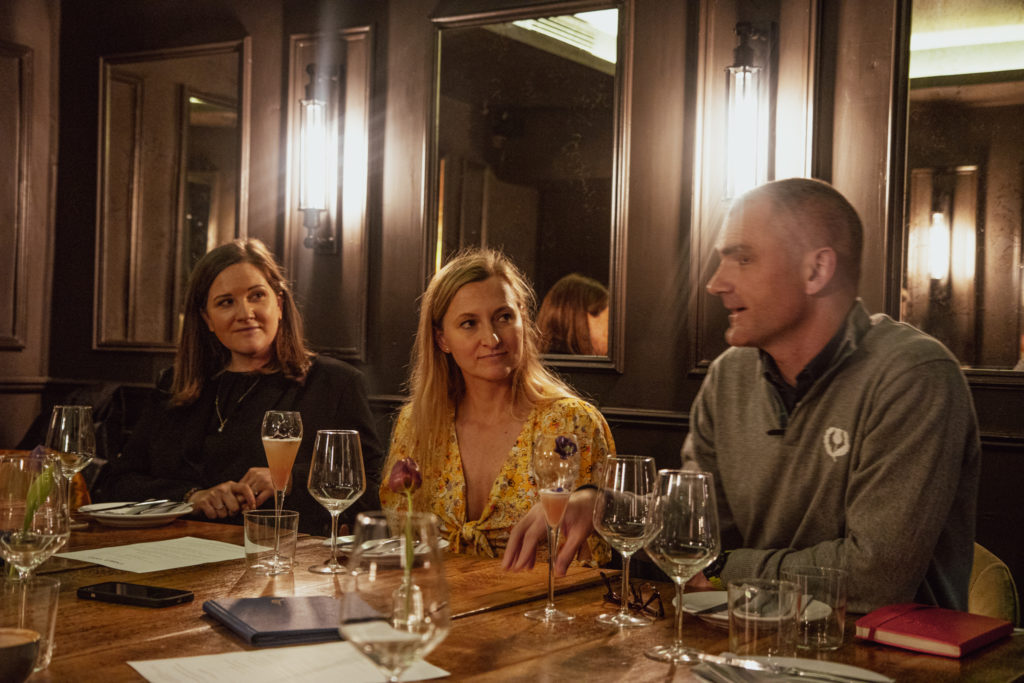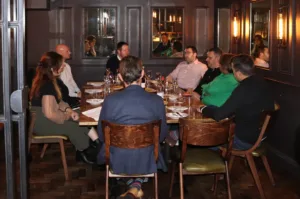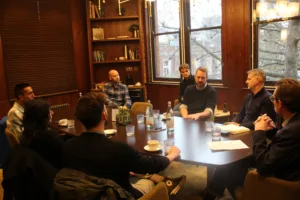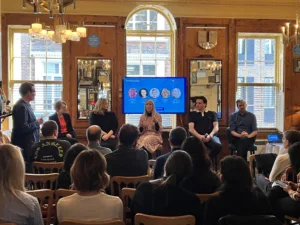By now, everyone knows that the deprecation of third-party cookies will mean big changes for digital marketing professionals and put first-party data strategies in the spotlight. However, how do you create the value exchange necessary to encourage customers to share their data with your brand and, even more importantly, what do you do with the data once you have it?
New Digital Age (NDA), in association with M&C Saatchi Performance, recently hosted a roundtable discussion of industry experts to explore these issues. NDA’s Editor in Chief Justin Pearse chaired the debate, where he was joined by Ruairidh Roberts, UK Country Manager, Waze; Ingrid Anusic, Marketing Director, Moneyhub; Katrina Broster, Marketing Performance & Technology Director, The Financial Times; Jamie MacNaughton, Head of Digital, Tails.com; Jamie Irving, Global Head Of Digital Marketing, Boden; plus Dane Buchanan, Director Data & Analytics, and James Shepherd, Managing Director, EMEA, both of M&C Saatchi Performance.
Discussing the evolution of measurement and attribution required in a cookieless world, Buchanan highlighted the renaissance of Media Mix Modeling (MMM) as indicative of the general direction of the marketplace. He said: “Attribution will still exist on a certain portion of your data, which will feed into MMM, which will feed into some kind of brand equity monitor. My background is in MMM so it’s great to see it back in fashion. While MMM is traditionally seen as relatively slow and expensive, we now have the capability, through new modeling techniques, to increase the speed and granularity of outputs and ensure the results are actionable for performance marketers.”
On the plus side, says Buchanan, MMM encourages a breaking of the silos that have built up inside marketing teams and also promotes looking at the ROI of campaigns over a longer period of time.
“At the moment, as marketers, we don’t tend to ask questions like ‘what is the payback over three years?’ I think that will change,” he said.
Breaking barriers
Moneyhub’s Anusic agreed that the attributional feedback loop will lengthen for many and suggests that B2C marketers can learn from the experience of their B2B counterparts over the next couple of years. She said: “Whenever I’m asked the main difference between B2B and B2C marketing, I always answer that we don’t sell Mars Bars. It’s not an instant or an impulsive decision for our buyers. We are dependent on many touch points and many decision makers. It was never possible for B2B marketers to say, with certainty, this event generated this customer. Our sales funnel can be nine-to-12 months long from first awareness to sale, so a big question is how do we communicate with future customers during that time?”
Ruairidh Roberts of navigation specialist Waze welcomes the breaking down of marketing silos, not least because his own product has often fallen between the departmental cracks with prospective clients. He said: “Media teams often tell us to speak to digital, despite our offering being more of an out-of-home opportunity than a digital performance one. So the breaking of the silos is a big opportunity for us.
“It’s interesting that despite the digital transformation of the past 25 years, TV, radio, and out-of-home have all survived and prospered as very strong marketing channels. It’s time for the marketing industry to fundamentally rethink how it calculates return on ad spend and better recognise the interplay between the different channels.”
Creating the value exchange
With first-party data increasingly crucial to any form of data-led marketing, The Financial Times’ Broster believes that brands should position themselves as “helpful assistants rather than rogue detectives” in their attempts to create a meaningful value exchange with their customers.
She shared: “The focus of publishers right now, understandably, is their known audience and how to nurture and convert that group of people that they can already identify via a login or email. However, if you open a dialogue with customers and ask people to trust you with their data, you need to then act on that data and provide some level of personalised experience to make the value exchange worthwhile. Is your business agile enough to tailor the customer experience?”
For MacNaughton of tails.com the value exchange surrounding customer data is much easier to understand. He said: “Our whole raison d’etre is to give a tailored experience to our customers’ dogs, therefore, we need a lot of data. The key is to remember what data you’ve already asked for and to repay it back through the customer experience. We did some testing on the nurture journey for prospects and the results showed a 7% lift in conversion just by using the zero-party data the customer had given us about their dog.”
The power of partnerships
Discussing the potential role for intermediaries and partner organisations in helping brand advertisers and publishers to ‘get it together’ on data-matching, Shepherd of M&C Saatchi Performance said: “The great thing is that, as an advertiser, your first- party data should be better than it’s ever been. Likewise, the publishers that we’re working with, their data should also be better than ever. As a result, in 2022, data partnerships are a whole different opportunity than before. Previously, where you tried to do these data matching deals, it’s been very hit and miss. There hasn’t been the accuracy you need to really measure any shift in behaviour, but things have changed for the better.”
Jamie Irving of Boden agreed and advocated an even broader approach to partnership in the quest for the post-cookie data your brand will need. He said: “There are so many partnerships that brands could look at doing with each other to help build out their data sets. Brands can leverage each other’s heritage and experience and make massive gains in terms of audience sets and new users. I think developing that sort of partnership is potentially more important than adtech partnerships right now.”
You can read part one of this roundtable discussion here.









